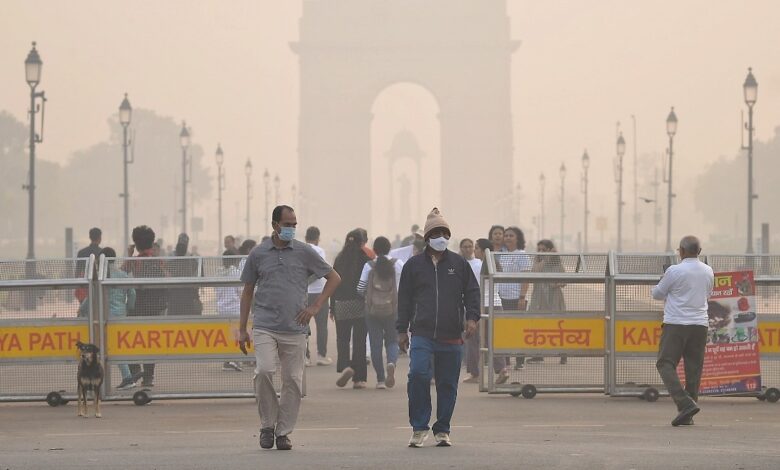No respite from pollution, ‘severe’ air quality again in Delhi, AQI at many places crossed 430 – Air pollution update delhi ncr aqi still in severe category anand vihar alipur AQI crossed 400 check the air pollution vayu gunvatta check here ralbs

Delhi Pollution: After improvement in Delhi’s air quality on Monday, today (Tuesday), November 26, AQI has again been recorded as very poor. Delhi’s average AQI at 7 am is in the very poor category. A continuous layer of smog is being seen in many areas in the national capital. The 24-hour average overall AQI at 7 am in Delhi is 396 (very poor – on the verge of severe). Delhi’s average AQI at 7 am on Monday was 279 (poor category). Of the 39 stations reporting, 18 are in the serious category. Many stations are in the severe (400+) category at 7 am
Check today’s AQI
Alipore-415
Anand Vihar- 436
Ashok Vihar- 419
Bawana- 424
Karni Singh Stadium- 403
Jahangirpuri- 421
India Gate- 412
Temple Road- 409
Mundka- 440
Narela- 413
Lajpat Nagar – 419
Patparganj- 409
Punjabi Bagh- 412
Rohini-432
Shadipur- 422
Sonia Vihar- 424
Vivek Vihar- 430
Wazirpur- 422
Health problems caused by pollution
According to the Central Pollution Control Board (CPCB), Delhi’s AQI remains in the ‘very poor’ category in many areas. AQI of Delhi’s Alipore has been recorded at 415, Anand Vihar – 436, Ashok Vihar – 419, Bawana – 424, Karni Singh Stadium – 403, Jahangirpuri – 421. At the same time, due to pollution in Delhi, people are facing many health problems. At the same time, a layer of smog was seen in many parts of the capital.
How is air quality measured?
If the AQI of an area is between zero to 50, then the AQI is considered ‘good’, if the AQI is 51 to 100, it is considered ‘satisfactory’, if the AQI of a place is between 101 to 200, it is considered ‘moderate’, if the AQI of a place is between 201 to 300. If the AQI of that area is considered ‘bad’. If AQI is between 301 to 400, it is considered to be in ‘very bad’ category and if AQI is between 401 to 500, it is considered to be in ‘severe’ category. Air pollution can cause many types of diseases. On this basis, grape category restrictions are imposed in Delhi-NCR.
What is Grape?
Grap means GRAP. The full form of GRAP is Graded Response Action Plan. This is a scheme of the government, which has been made against the increasing pollution in Delhi-NCR. Pollution is controlled through this plan. Actually, it has many stages and these stages also increase with increasing pollution. As the phases increase, restrictions also increase in Delhi.
GRAP has 4 steps
- When the air in Delhi deteriorates from 201 to 300 AQI, the first phase is implemented.
- After this, if the air becomes worse and AQI reaches 301 to 400, then its second phase is implemented.
- If the air becomes very bad i.e. AQI becomes more than 400 then the third phase takes place.
- When the situation becomes worse, the fourth level of GRAP is implemented.
Measures to prevent pollution
To avoid pollution, cover your mouth and nose properly or wear a mask when you go out of the house. To avoid eye allergies, wear goggles before going out. Use air purifier at home in case of excessive pollution. At the same time, children and elders of the house were prevented from going out. In such a situation, ask the children who go to play in the park to play indoor games at home. If you go for morning and evening walk, then do not go out for a few days, otherwise excessive pollution can cause respiratory problems.




